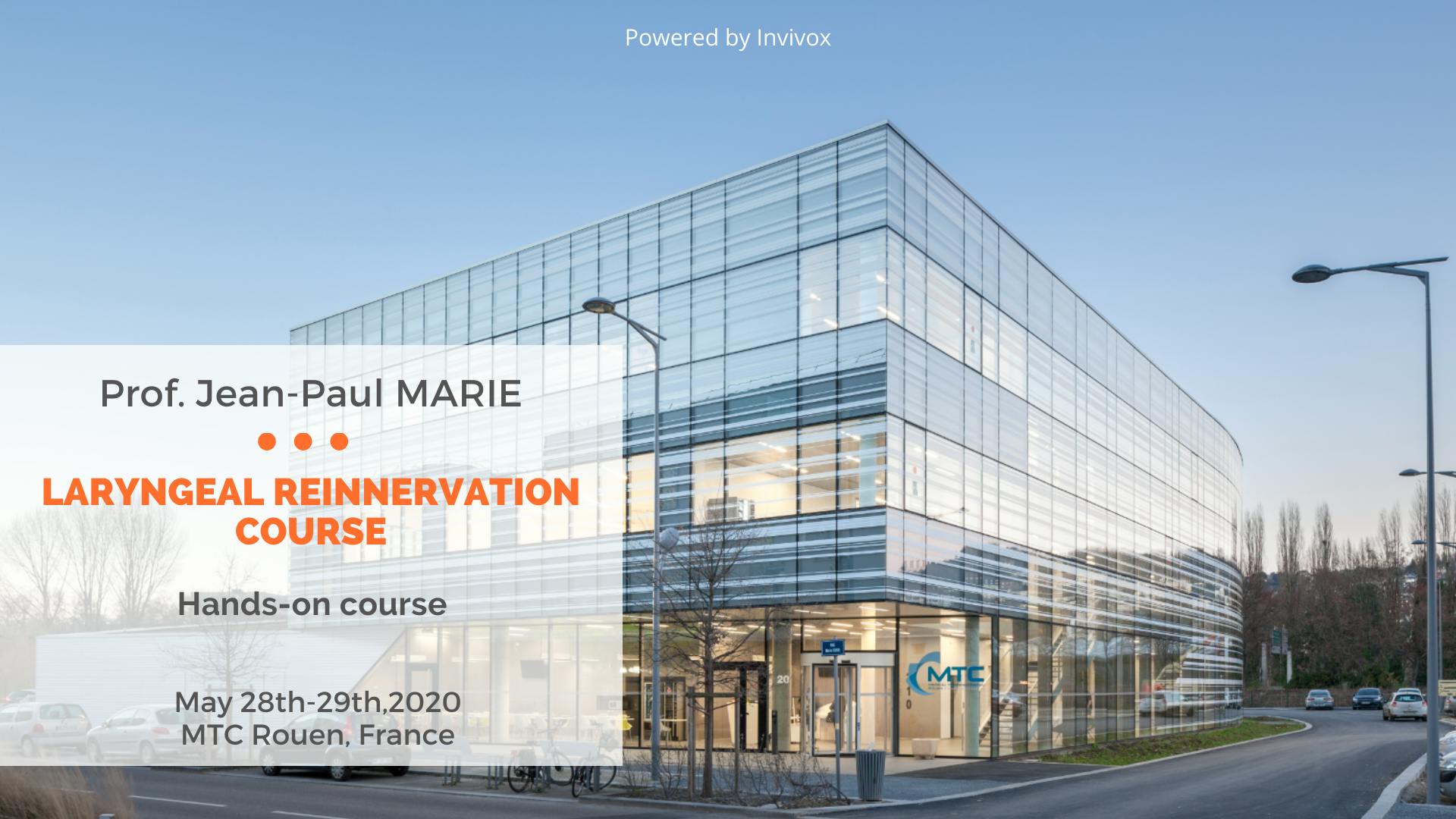INVIVOX: What is the purpose of your masterclass dedicated to laryngeal reinnervation?
Professor Jean-Paul Marie: When the nerve of the vocal cords no longer works, even if it has been repaired or has regenerated, the vocal cord does not move anymore. If the paralysis is unilateral, it causes dysphonia. If it is bilateral, it causes an alteration of breathing. Conventional laryngeal enlargement treatments improve breathing but result in impaired voice and swallowing disorders. I have been working for years on the functional rehabilitation of the larynx and the preservation of all functions, which in theory can be applied to laryngeal transplantation, as it is to the hand or the face. It is a theoretical goal that we will put into practice soon, with the collaboration of several French teams. Reinnervation techniques, by their reliability, would allow to replace the larynx and to graft nerves in order to restore its functions.
The common current application is, therefore, to rehabilitate as well as possible by reinnervation: the voice in unilateral laryngeal paralysis, and breathing, voice, swallowing in bilateral laryngeal paralysis (which are less frequent). In bilateral paralysis, the principle of reinnervation is complex because all functions of the laryngeal muscles must be replaced by detaching the nerves from the larynx and reconnecting them with nerves from other circuits.
INVIVOX: What techniques will you present?
Prof J.-P. M.: In unilateral laryngeal paralysis, we proceed to a retrograde dissection of the recurrent intra-laryngeal nerve which we anastomose to a cervical nerve whose minor function is the loop of the hypoglossal. However, in bilateral paralysis, where we must restore respiratory motricity to the muscles that open the vocal cords, we take the upper root of a phrenic nerve (the nerve of the diaphragm) which we extend with a Y-shaped graft and which we implant in specific laryngeal muscles. At the same time, we connect a special hypoglossal nerve on each side to the adductor branches of the recurrent laryngeal nerve.
INVIVOX: How are these techniques innovative?
Prof J.-P. M.: Laryngologists have been trying to find solutions to restore mobility to a paralysed larynx for a long time. These techniques date from the 90s. We now benefit from more than 15 years of hindsight and come to obtain very interesting results. All this work has been done within the research laboratory that I lead. It is a product of the University of Rouen.
INVIVOX: What are the main advantages of this course?
Prof J.-P. M.: It is designed to give the participants all the technical baggage to carry out reinnervation techniques back home. "Live" operative demonstrations followed by dissection on fresh corpses allow them to reproduce the intervention and to practice nerve microsurgery. The courses are there in parallel to explain the method, the indications, the contraindications, how to evaluate the patients, the results...
INVIVOX: What steps will you show participants?
Prof J.-P. M.: The course is organised around theoretical teaching, surgical and "live" demonstrations with exploration of the larynx, arytenoid palpation, laryngeal electromyography, teaching of the technique of anaesthesia for laryngeal evaluation etc.
INVIVOX: What are the key steps during the intervention?
Prof J.-P. M.: Detection of phrenic roots, branches and hypoglossal nerves, retrograde dissection of recurrent nerves and identification of its intra-laryngeal branches, removal of interposition nerve grafts, Y-shaped grafts, large auricular nerve grafts, etc. I particularly insist on the pitfalls to be avoided as to the choice of the indications and the precision of the technical execution.
INVIVOX: What are the benefits to participants of this training?
Prof J.-P. M.: The sharing of experience benefiting from my hindsight, and that of colleagues, as we are now many to be able to perform these techniques. A network of experts: my alumni come to share their experience, operate, supervise dissections, etc. A high-tech training infrastructure: the Rouen Medical Training Centre that allows interaction between surgical experts and the public who can communicate at any time. A good problem-solving training: a "live" operation, even if it is a long one, makes it possible to see the problems encountered and how to solve them, which a film can't provide.

